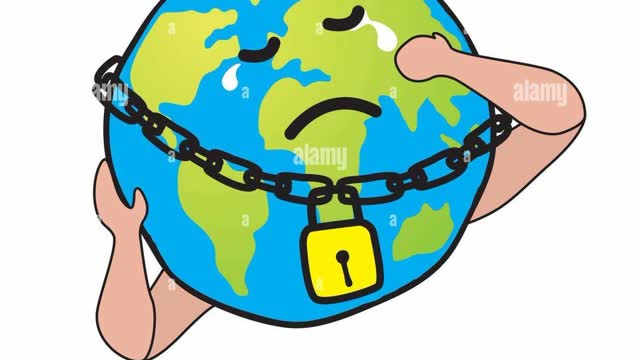Premium Only Content

Climate lockdown
It was the year 2050, and the world was a very different place. Climate change had reached a critical point, and the effects were becoming more and more severe.
Temperatures had risen to record levels, causing droughts, heatwaves, and forest fires to become more frequent and more destructive. Sea levels had risen, flooding coastal cities and forcing millions of people to flee to higher ground.
As the crisis worsened, governments around the world declared a "climate lockdown," implementing emergency measures to try to mitigate the damage and prevent the situation from getting any worse.
The lockdown measures were harsh and unpopular, but they were necessary. People were ordered to reduce their energy consumption and carbon emissions, and many were forced to leave their homes and relocate to safer areas.
As the lockdown dragged on, people grew increasingly desperate and frustrated. Many protested and resisted the measures, but it was too late. The damage had already been done, and there was no turning back.
As the world struggled to adapt to the new reality, it became clear that the climate lockdown was a turning point. It was a wake-up call, a warning of what could happen if we didn't act to protect our planet.
And as we looked to the future, we knew that we had to do better, to learn from our mistakes and work together to build a brighter, more sustainable world.
The end.
-
 1:17:50
1:17:50
Redacted News
3 hours agoBREAKING! CHARLIE KIRK'S ASSASSIN IDENTIFIED, NATIONWIDE MANHUNT UNDERWAY | Redacted News
233K220 -
 1:05:30
1:05:30
vivafrei
5 hours agoCharlie Kirk Assassination FBI Updates - With FBI Whistleblower Kyle Seraphin
244K142 -
 1:59:22
1:59:22
The Quartering
5 hours agoJustice For Charlie Kirk! FBI Releases Photo Of Shooter, Mass Firings For Those Who Celebrate!
279K170 -
 36:31
36:31
Stephen Gardner
4 hours ago🔥NEW: FBI's Bombshell Reveal on Charlie Kirk Assassin!
91.5K218 -
 LIVE
LIVE
RealAmericasVoice
3 days agoHOME OF REAL NEWS
6,120 watching -
 1:21:52
1:21:52
The HotSeat
4 hours agoThe Manhunt Is Underway! Time Is Running OUT!
55.9K26 -
![[Ep 746] Remembering: Charlie Kirk, 9/11, Benghazi | Guests Dave Bray [USA] & Tim Cruickshank](https://1a-1791.com/video/fww1/56/s8/1/i/-/-/g/i--gz.0kob.2-small-Ep-746-Remembering-Charlie-.jpg) LIVE
LIVE
The Nunn Report - w/ Dan Nunn
4 hours ago[Ep 746] Remembering: Charlie Kirk, 9/11, Benghazi | Guests Dave Bray [USA] & Tim Cruickshank
148 watching -
 22:31
22:31
Jasmin Laine
3 hours agoMSNBC Analyst FIRED in Disgrace Over Charlie Kirk Remarks—FBI Launches $100K Manhunt
29.8K47 -
 58:15
58:15
The Tom Renz Show
3 hours agoRIP Charlie Kirk - Updates On America’s Turning Point
23.9K15 -
 31:05
31:05
Uncommon Sense In Current Times
3 hours ago $0.32 earnedCharlie Kirk Assassinated: Why Silence nor Anger is Not an Option
14.7K5